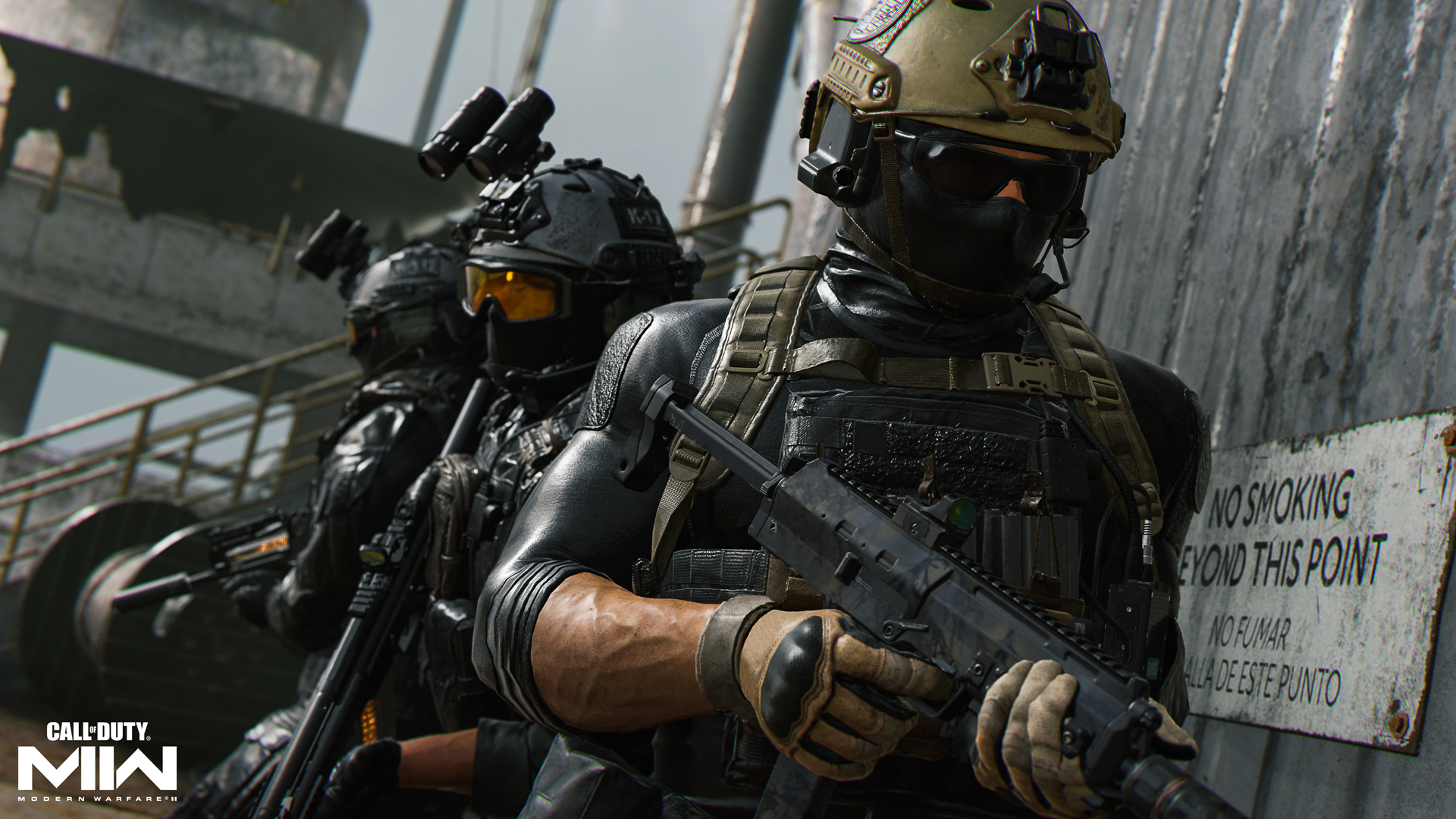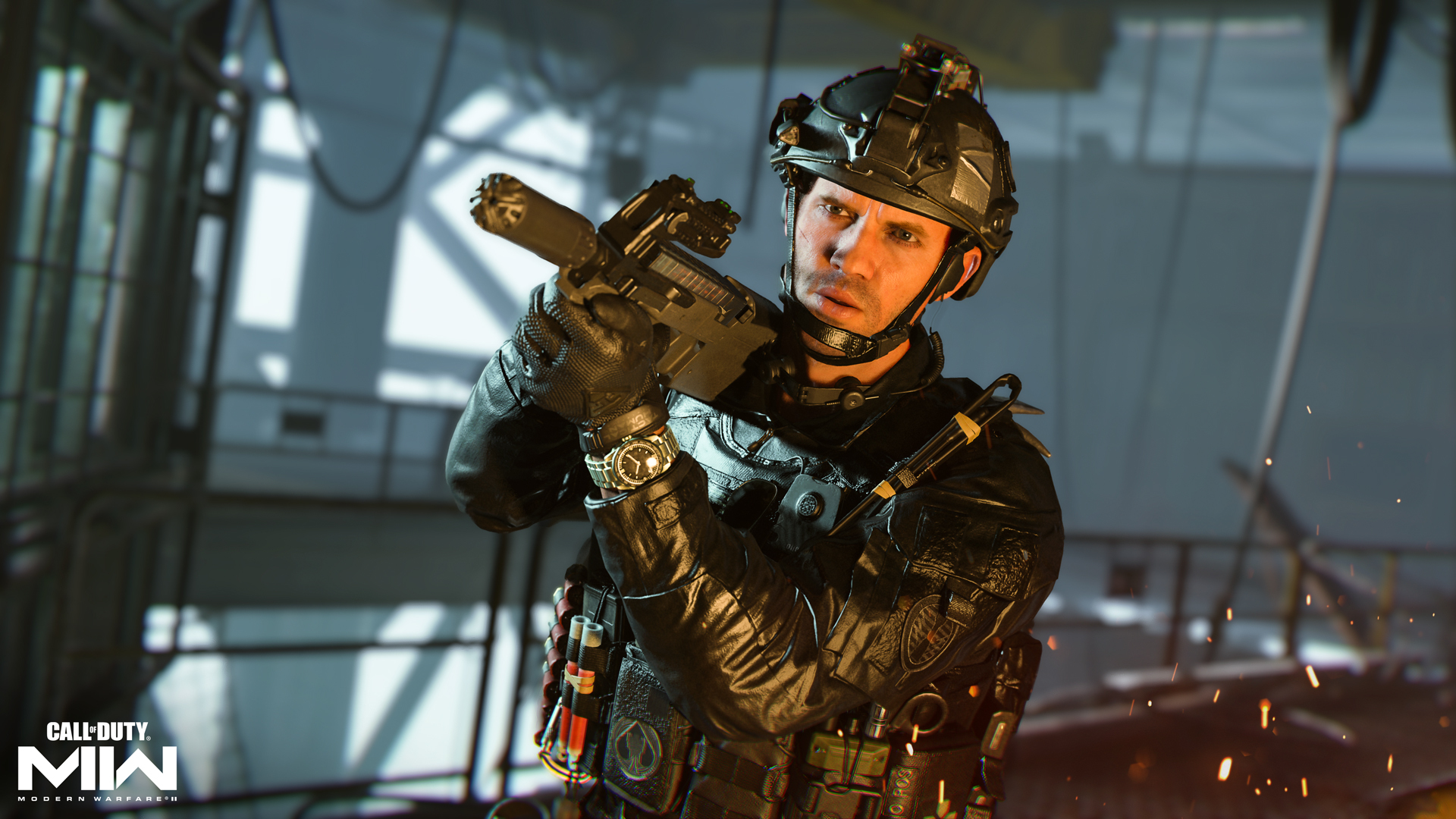The Software License and Service Agreement will be updated. Please follow this link [https://www.activision.com/legal/ap-eula] in order to see these changes.
Deep Talent: How Infinity Ward Brought Call of Duty®: Modern Warfare® II’s “Dark Water” to the Surface
The anticipation is palpable. As the October 28 release date for Call of Duty: Modern Warfare II approaches, we sat down with several Infinity Ward employees to discuss the skills and drive required to develop a vertical slice showing off one of the upcoming game’s premier Campaign missions: Dark Water.
Game development balances on a razor’s edge as the various teams collaborate and polish their disparate parts into a final, cohesive scene. Infinity Ward chose Dark Water — a Campaign Mission following Task Force 141, and Shadow Company, on a nighttime raid to an oil rig and cargo ship — to first showcase Modern Warfare II to the public. As you can see, the studio held nothing back, showcasing incredible visual detail and water effects as Operators battle in the pouring rain, amidst the churning seas.
We sat down with some of the key contributors to discuss the making of Dark Water — the importance of collaboration to the creative process, the journeys and influences that shaped their careers, the skills they seek in new hires looking to join the storied studio, and the pursuit of their craft to continue pushing what’s possible in game development.
Joining us for the discussion are Senior Producer Candice Harris, Lead Level Designer Richard Farrelly, Designer April Friesen, Expert VFX Artist Patrick Hagar, Expert VFX Technical Artist Daniel Stern, and Senior Lighting Artist Krzysztof Wójcik.
It’s Everybody’s Mission
“Each individual on the team has ownership of the mission,” says Candice Harris. Harris has worked at Infinity Ward since 2008, starting as a QA tester before acting as the Online Services Coordinator. From there, she was named Community Coordinator before finally joining the production team during some of the studio’s most formative years. “Everybody is invested, and everybody speaks up to offer suggestions on making it better. We all play the game and want to make sure it feels good and cohesive.”
The interlocking parts involved in developing Dark Water require a concerted effort, from the animation team’s work on characters and vehicles, the lighting team’s focus on visibility in a nighttime setting, to the VFX and Tech Art teams creating realistic water and atmosphere effects. In the end, almost every department helped to make Dark Water playable. And it can’t just look believable. This is Call of Duty; it has got to be jaw-dropping.
“We started very early with a prototype,” Harris says, referring to the level’s second half where the Operators board a cargo ship, water sloshing on the decks, containers sliding back and forth in the rough water. “It was basically just the moving ship and containers. The design teams worked together to nail the gameplay, while the producers communicated with the other departments.”
It’s a process perfected through iteration. “Initially, we only had a few containers on the deck of a very small fishing trawler,” says April Friesen. “It wasn't playing like we imagined, so after prototyping a variety of environments, the one we found most fun was what I called the 'cover jungle': a large space with a crazy number of containers and enemies popping out from anywhere and everywhere. We had to rip the ship apart that we had already built to make it at least four times bigger, along with redesigning all of the combat to reflect the new space. It took a lot of trial and error.”

Heading into Dark Water
Alongside iteration, Rich Farrelly stresses the importance of continuous innovation. “We’ve always got to make sure that we’re advancing in some area. The team set a goal to develop this new water-based gameplay…and it’s a huge lift. We went out and scanned an actual ship,” he adds, citing an example of the team’s commitment to immersion. “Through photogrammetry we’ve acquired highly realistic surfaces and materials. We’re not just making this stuff up.”
He’s confident in his colleagues’ skills, and he knows they’ve created something special for their fans. “I want all the people who were happy and excited about Modern Warfare (2019) to come back and be just as excited or more about this one. And I think we did it. When this thing comes together in October, people are going to be blown away.”
Many Paths to Dark Water
It takes a variety of backgrounds and skill sets to make games, let alone a genre-defining blockbuster series like Call of Duty. The recipient of Best Online Multiplayer (Game Critics Awards), Best Audio Design (The Game Awards), and nominated for the Game of the Year (Golden Joystick Awards), Modern Warfare (2019) has sent expectations soaring to say the least.
Everyone in the discussion contributed to Dark Water in some way, though their paths to this point are varied, the final product became richer for it.
“This is my second career,” Farrelly says. “I didn’t start doing this until I was about 30. Before then, I was a hobbyist making Quake levels. After joining Activision, I ended up working on Call of Duty: United Offensive. That was the first Call of Duty game I worked on, and many since then. It’s been my formal education in game development. I didn’t go to school for it or anything.”

Battling the elements, mid-battle
Meanwhile, Patrick Hagar has been with Activision for over a decade, with roles across three different development studios. “I started out as an environment artist, which is what I went to school for at the Art Institute of L.A.. I did environment art for a few years and then transitioned over to VFX which I’ve been doing ever since.”
A more recent hire to the gaming industry, Daniel Stern moved over from working on movies and commercials. “I got bored of it,” he says of VFX in film. “Game development is way more complex. Every day I learn something new.”
No day is like another in game development. In creating a level like Dark Water, the team constantly runs into new territory, always testing their skills. “We soon realized that we wanted to do a bunch of things we hadn’t before,” Farrelly says. “Whether we didn’t have the tech or hadn’t tried it before…but we forge ahead. It’s an ongoing iterative process.”
Show Your Work
It takes a practiced set of skills to create a Campaign mission like Dark Water, so when looking to bring new talent onboard, Farrelly goes to the work first. “The first thing I want to see is the portfolio: Let me see the work.”
With multiple teams collaborating this closely, on such complex projects, there’s more to it than just what a prospective team member can do - it’s also about who they are. “Do they have the drive? Are they proactive and collaborative? Are they passionate about the game? Can they look at a game and tell me why it’s good or not, and what they would or wouldn’t fix?”
Harris succinctly distills her role as a producer: “We make sure that our teams can create their best content, and have access to the right tools to get it done.” That involves not just technical know-how on her part, but mastery over soft skills as well. “You need to be a people person, or at least enjoy communicating and talking to others because you’re going to be doing that a lot. You also need a thick skin…to be able to calmly approach situations and help people figure out what kind of support they need.”

Dark Water presented the teams with unique new lighting and texture challenges
Complex projects like this also benefit from the team members’ ability to draw on all of their creative skills and passions. “Photography is really important for us,” adds Krzysztof Wójcik in reference to a career in lighting. “As a lighting artist, you need to consider the whole scene, the final look. Studying color theory helps, and of course your love for gaming and the understanding of what makes a game good. Basic skills in art help, too. You need to be aware of what creates what. In Dark Water, it’s nighttime but the visibility needs to be there. It’s a fine balance.”
It’s a job requiring serious craftsmanship. “We’re trying to push the quality of the game to make it more real and more perfect,” Wójcik says. “There’s a lot of code that goes into a Call of Duty game. There’s so much work that people are not aware of, from AI to environments, making lighting more realistic and precise, and other elements that we always try to incorporate into our project.”
"It’s way more complicated than it looks,” Farrelly says. “And we strive to never go below 60 frames per second. That’s a hallmark of the franchise.”
Wójcik adds, “I’m proud of what we have achieved.”
Making Dark Water — The Interview Continues
You’ve read about how they got here, now head over to the Activision Games Blog to dive deeper into the making of the Dark Water Campaign Mission in Modern Warfare II, including a glimpse at Infinity Ward’s collaborative relationship with the talented developers at Activision Shanghai.
Impressed by what you see? You can now pre-order the game on your platform of choice for access to the upcoming early access period for the Open Beta in mid-September, as well as early access to the “Dark Water” campaign. And keep your eyes peeled for more Modern Warfare II news leading up to its October 28 release.
Looking to push the boundaries of creative excellence in your own career? Check out amazing opportunities at our Activision Careers site.
